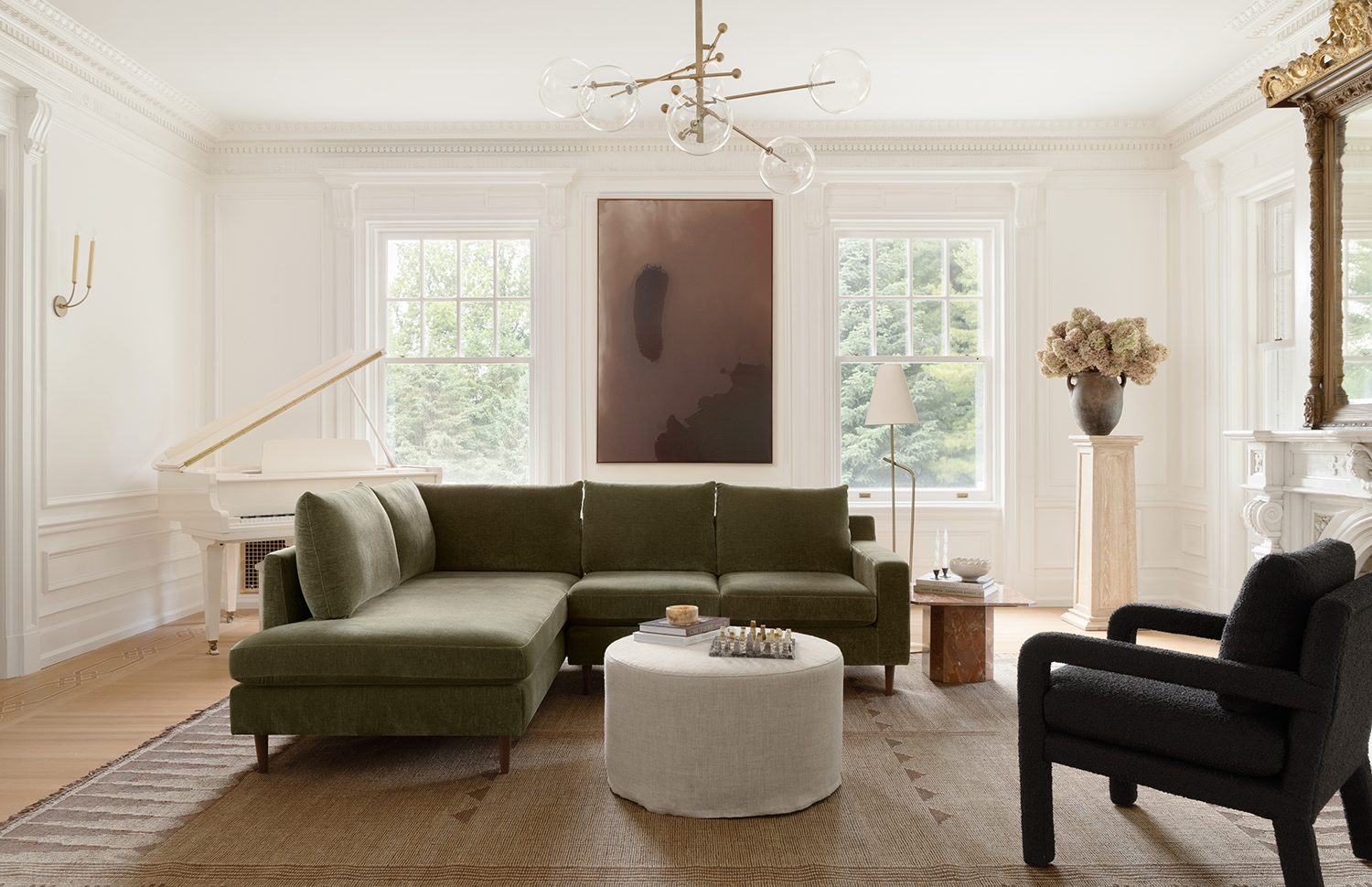From floral wallpaper to classic details like fringe, woodwork, and crystal chandeliers, traditional design is one of the biggest trends in the industry as of late. So, it should come as no surprise that wall moulding ideas are on the rise as well.
Defined as “any finish or decorative wood detail added to a wall,” wall moulding is a “designer favorite for 2025 and beyond,” specifies Havenly designer Brady Burke. In fact, our design team believes that wainscoting, board and batten, picture moulding, and the like will slowly usurp the once-ubiquitous painted accent wall in the coming years. “Often dubbed ‘trim,’ or ‘millwork,’ wall moulding elevates any space and adds far more character and charm than paint,” he adds.
Ahead, find our official break down on the different types of wall moulding, plus our tried-and-true wall moulding ideas that never go out of style.
Wall Moulding Ideas: Crown & Baseboard Moulding

Crown and baseboard are the two most common types of wall moulding. Crown molding is applied at the intersection of walls and ceilings to add character and decorative detail. It’s also used to close gaps between upper cabinets and ceilings in kitchens, play rooms, or storage spaces to create a more upscale, custom look and hide the unfinished tops of cabinetry.
Baseboard moulding, on the other hand, is both decorative and functional. This trim rests between the bottom of the wall and the floor to cover the often uneven joint where the two surfaces meet. In addition to adding a decorative touch, baseboard moulding protects the bottom edge of the wall from general wear and tear, water damage, or anything that can compromise its structural integrity.
Wall Moulding Ideas: Wainscoting
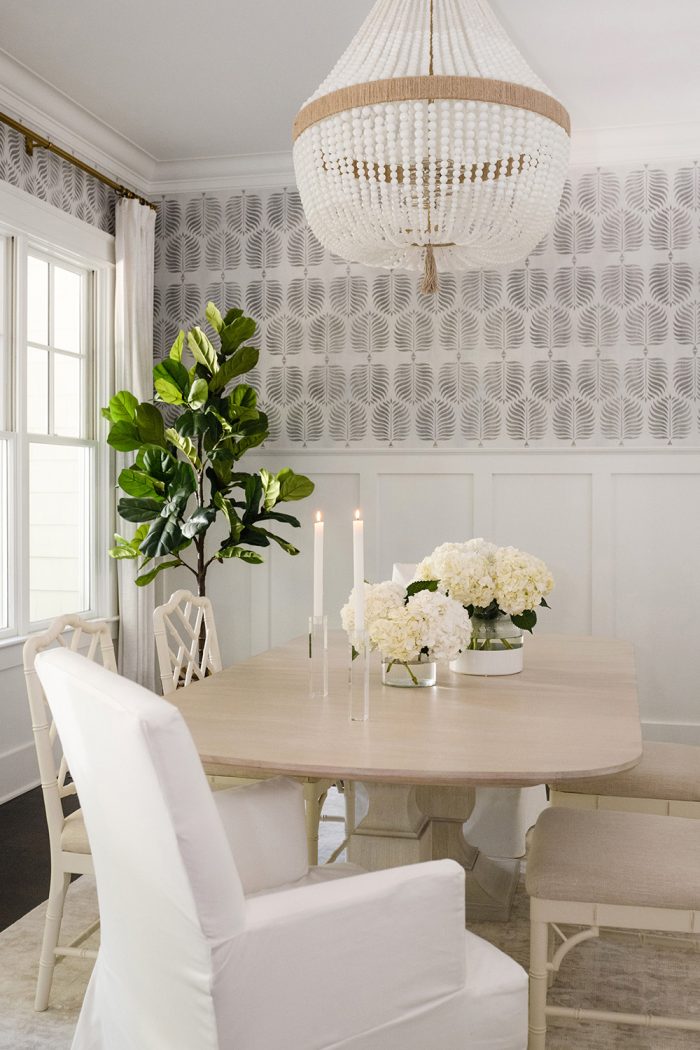
Wainscoting is a very traditional type of wall moulding that has been used for centuries. Historically, it was added to high-traffic areas like dining rooms to protect the walls from scuffs or damage, in addition to serving as secondary insulation from heat, cold, and noise. Wainscoting typically runs one-third to one-half of the way up the wall from the floor, and is capped by larger wood trim (such a chair rail) to close of the raw edge. Today, wainscoting is added all throughout a home to add a classic feel and enhance the architectural detail of a space.
Wall Moulding Ideas: Board & Batten
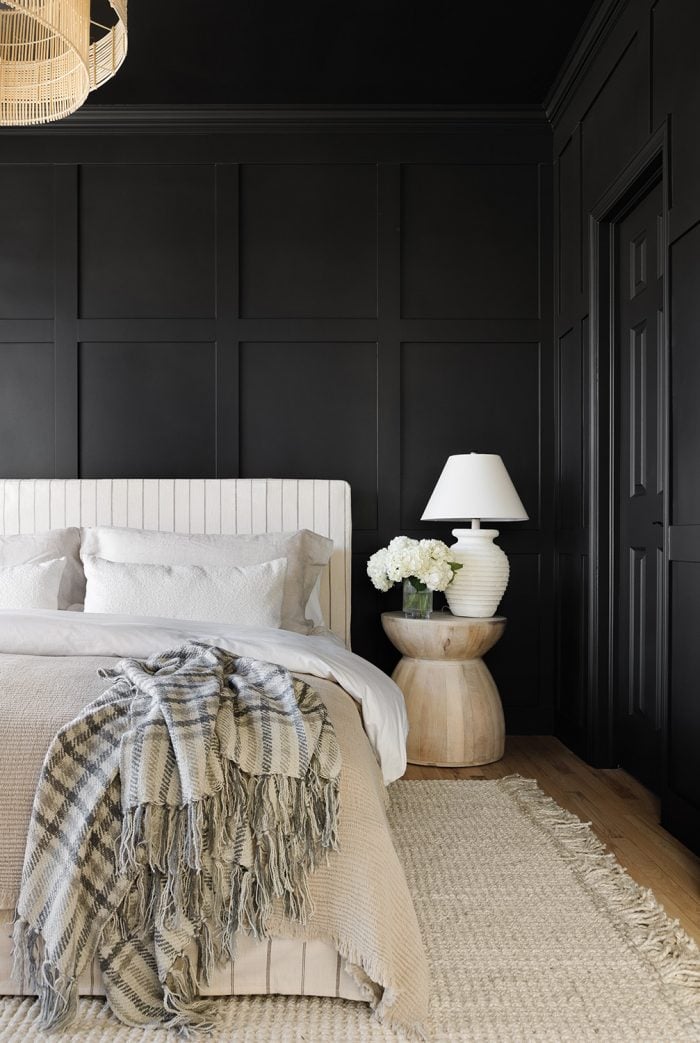
Originally used on home and barn exteriors, board and batten refers to the use of alternating narrow wood strips and wider panels to create a layered, geometric pattern. Historically, the vertical strips were used to cover wood panel seams to create a more energy-efficient siding. Today, it’s much more decorative than it is functional — you can currently find board and batten in every room in the home. But no matter its application, it creates a more rustic, laid-back look than more intricate wall moulding, like picture moulding (more on that later).
Wall Moulding Ideas: Picture Frame Molding
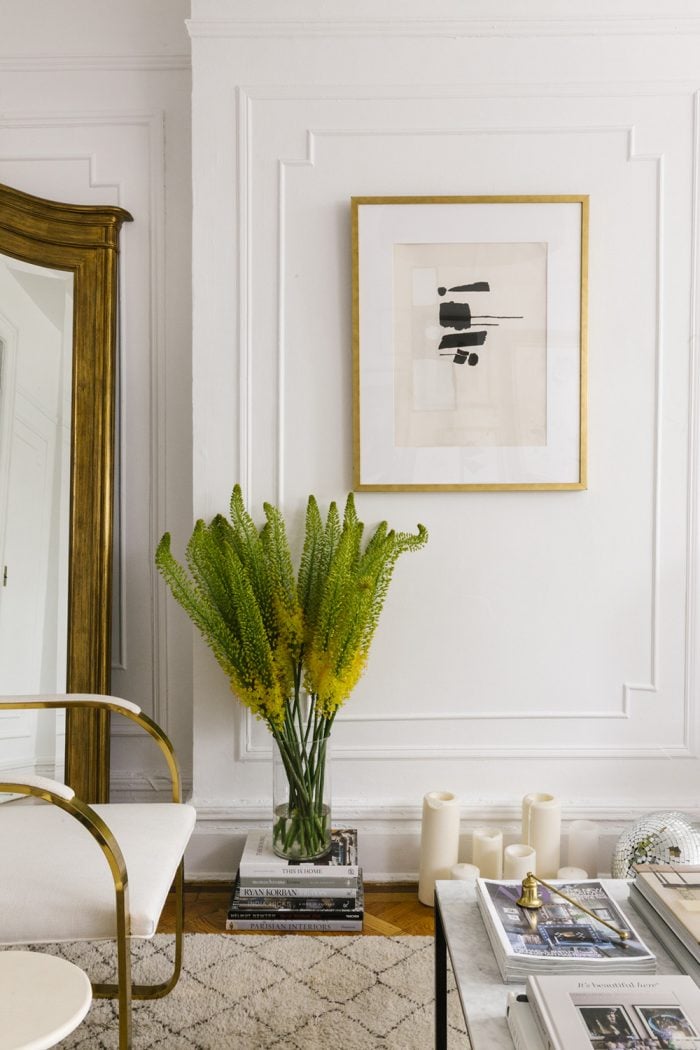
One of our personal favorites, picture molding is purely decorative and easy to install. Using a minimum of four pieces of one-quarter to two inch trim to create a picture frame effect on the walls, this style draws the eye upward and helps break up large, empty walls. You can keep picture moulding relatively simple, or change up the trim size, detailing, or placement for added detail and visual interest. No matter your configuration, picture moulding adds old-world character and charm to any space.
Wall Moulding Ideas: Shiplap

Although shiplap was designed for exterior use, its modern application falls under the umbrella term of “wall moulding.” Shiplap actually refers to the specific type of wooden boards that were used to make ship decks, and was also used to line interior walls before the rise of plywood and drywall. Now, thanks to the modern farmhouse boom of the 2010s, shiplap is an affordable, preferred way to add subtle rustic detail to interiors.
How & When To Add Wall Moulding
Fill Large, Blank Walls
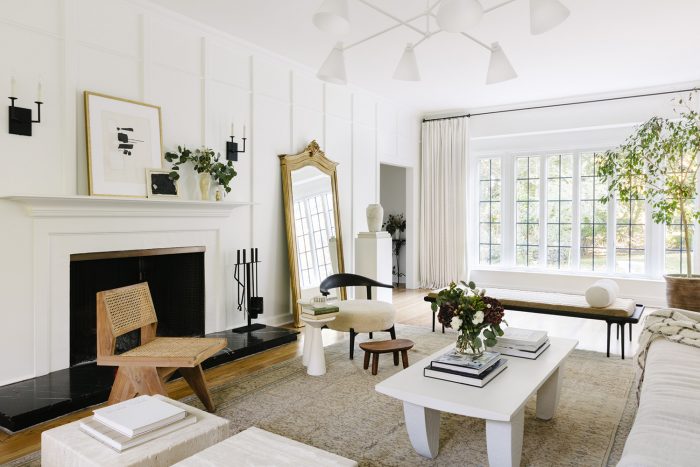
Decorating a large, blank wall is a daunting task for professional designers and hobbyists alike. Rather than building out an elaborate gallery wall, painting an accent wall, or installing wallpaper, wall moulding adds visual interest, subtle pattern, and character in one fell swoop. The addition of lighting and a single mirror or piece of artwork completes the look, without the need for excess decor, shelving, or art.
Add Detail to Small Spaces

Small spaces like hallways, stairways, and bathrooms are perfect candidates for wall molding. Wainscoting lining a long hallway, for example, adds the perfect amount of detail to a space where furniture isn’t an option. Crown moulding and trim can complete the look of a built-in bookcase in a cozy home office, while picture molding lining a staircase is an easy way to add character to difficult-to-decorate vertical walls.
Imbue New Builds With Character
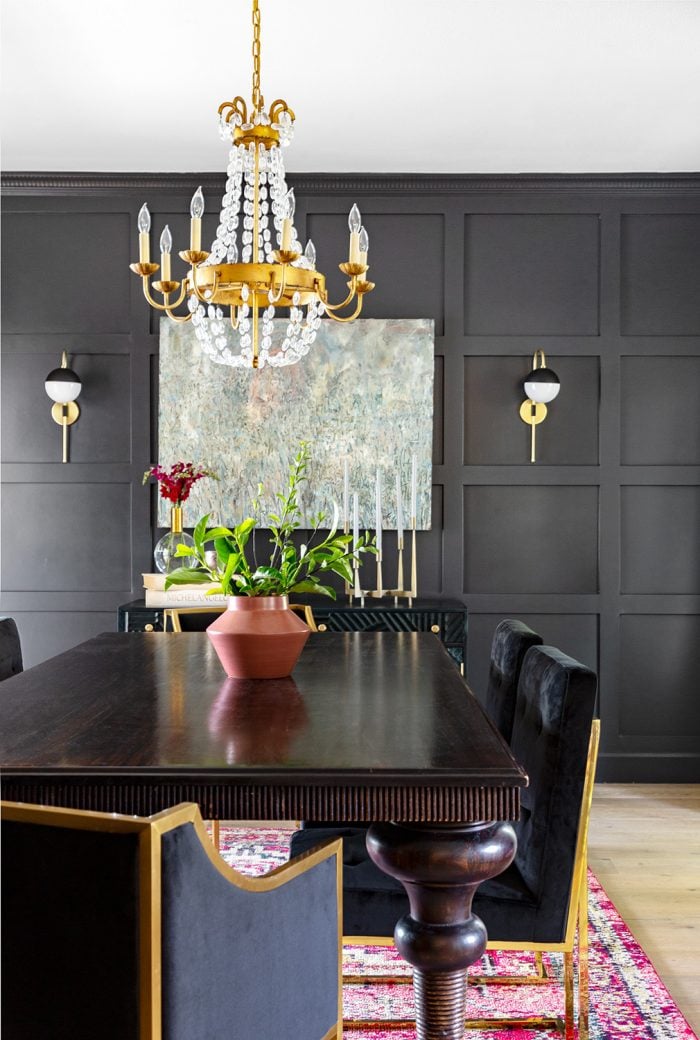
Unfortunately, many new builds lack the classic architectural details that add character and charm in an effort to cut costs. The result is a lot of bare-bones drywall that can easily feel cold and one-dimensional. Adding decorative crown molding to new construction is an efficient, relatively cost-effective way to add personality to a brand-new apartment or home.
Differentiate Rooms in Open-Concept Homes

If your home or apartment has an open-concept floor plan, you can use wall paneling, shiplap, or wainscoting to differentiate the separate rooms. For example, adding shiplap to your kitchen separates it from the nearby dining room, while picture moulding near a living room fireplace creates a proper design focal point.
Make High-Traffic Spaces More Durable
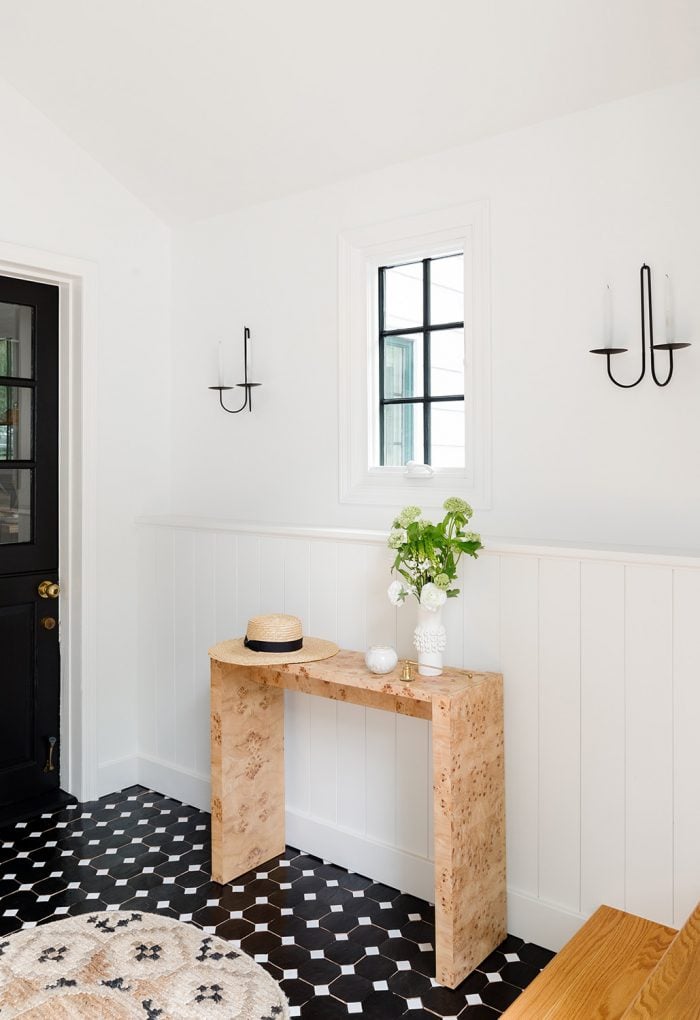
In high-traffic spaces like entryways, mudrooms, and hallways, consider embracing the traditional application of wall moulding. Use wainscoting and shiplap to add long-term durability to a space and impede scuffs, dust, and dirt.
Lock Out Moisture

Similarly, wall moulding can add a layer of protection in high-moisture areas like bathrooms, laundry rooms, and kitchens. For example, simple wood panels capped with chair rail around a bathtub or behind a washer and dryer can further lock out moisture and prevent water damage.
Add Detail to Ceilings
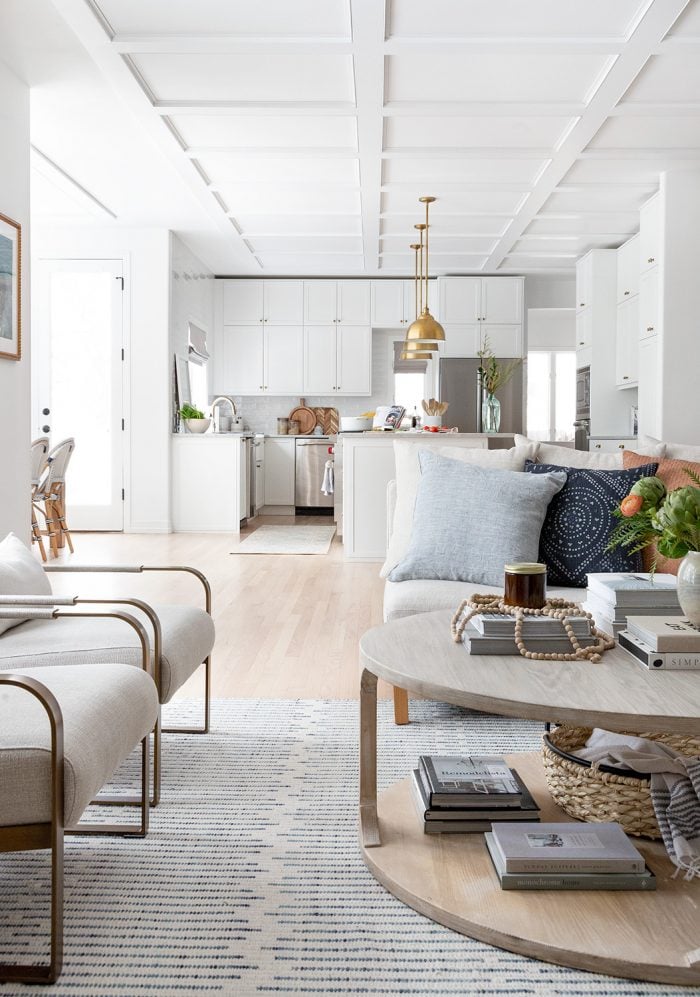
Although we’ve been talking exclusively about walls, wood paneling can be a beautiful addition to large, empty ceilings as well. Similar to ceiling wallpaper, woodwork and paneling on the ceiling can draw the eye up and add even more subtle character and charm to your home.
Looking for a way to overcome your unique home dilemmas? Work one-on-one with our expert interior designers for just $129 per room. Get started today with our style quiz.

